Realism, polish impressionism, beginnings of symbolism
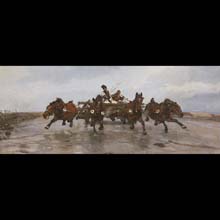

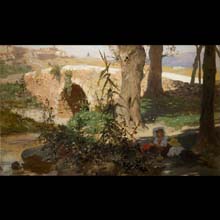

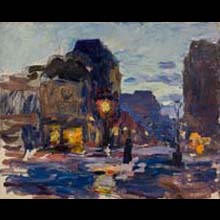
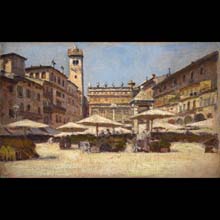
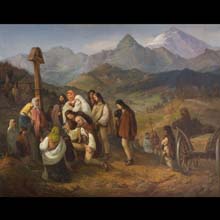
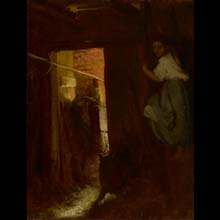
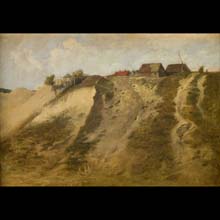
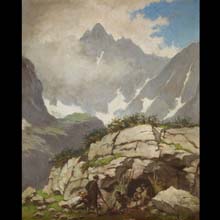

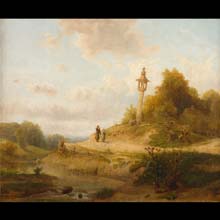
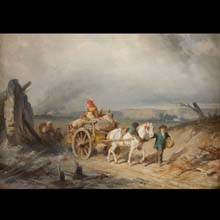
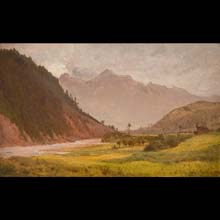
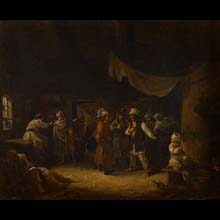
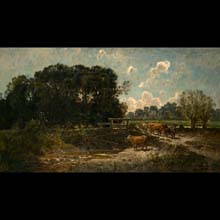
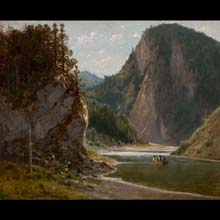

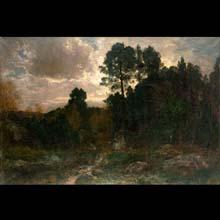
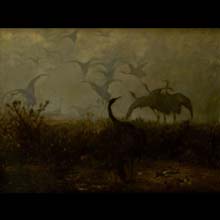
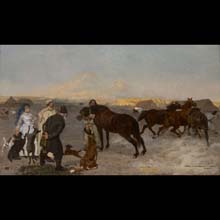
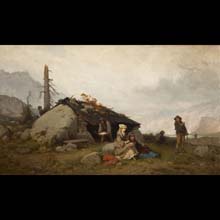
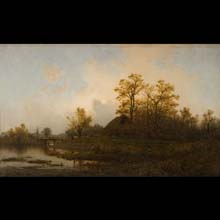
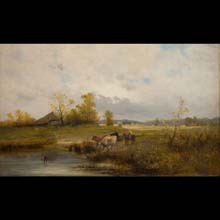
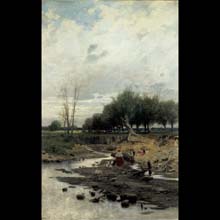
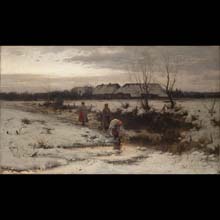
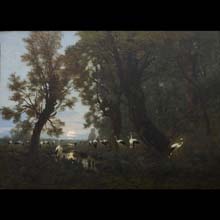
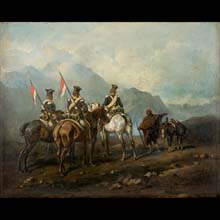
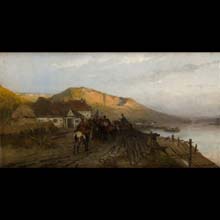
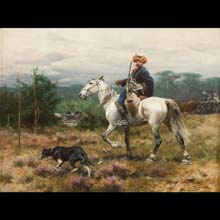
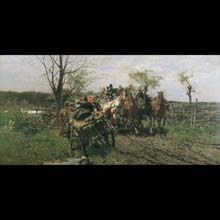
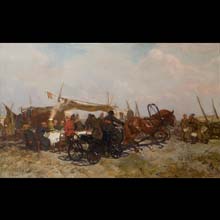
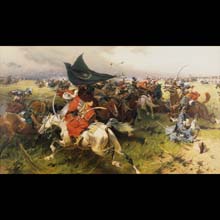

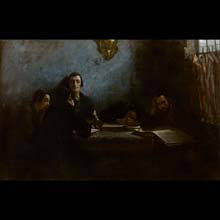
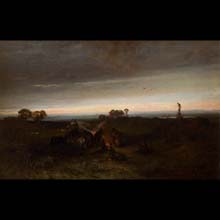
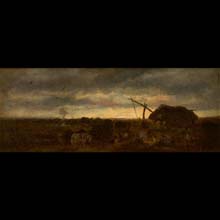

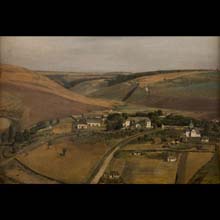
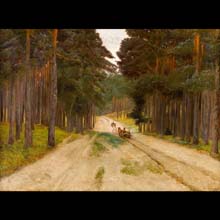
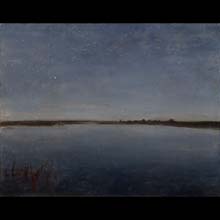

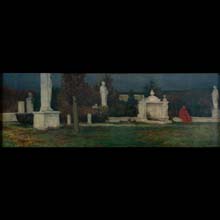
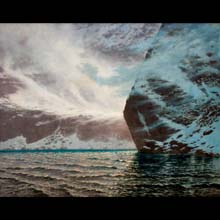

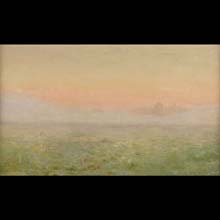
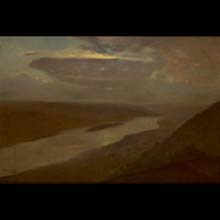
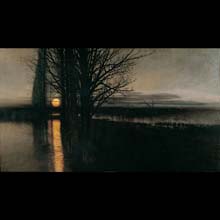
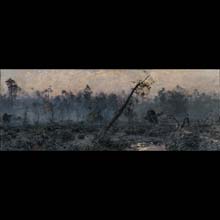
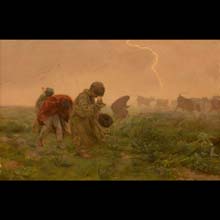
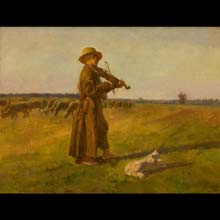

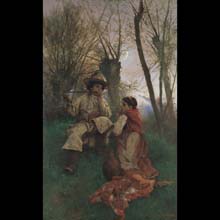
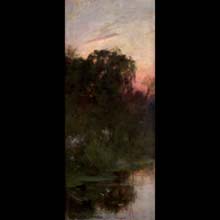
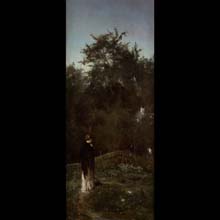
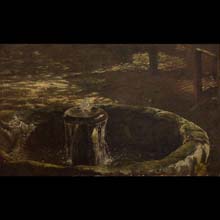
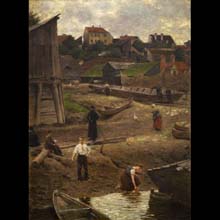
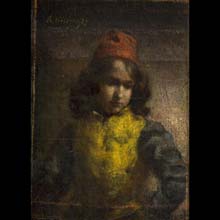
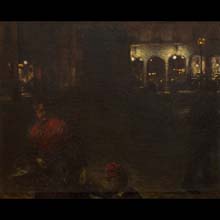
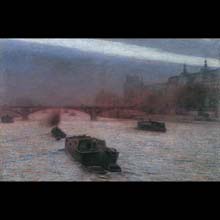
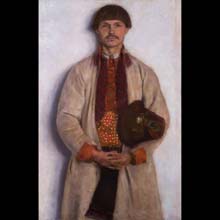

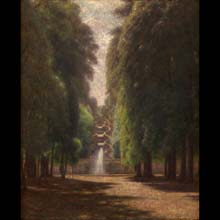
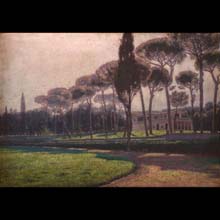
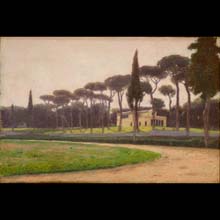
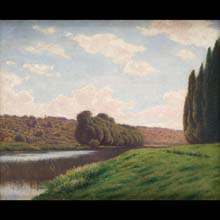
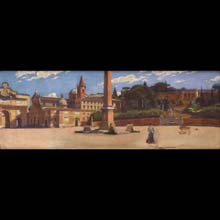
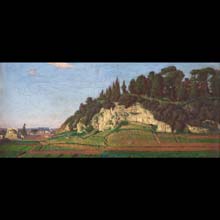
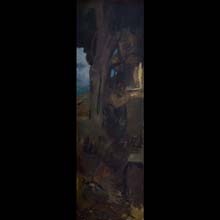
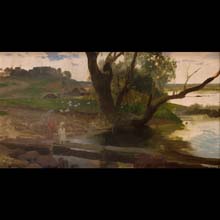
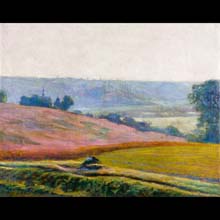

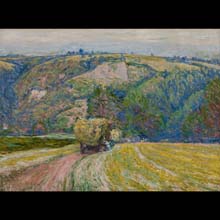
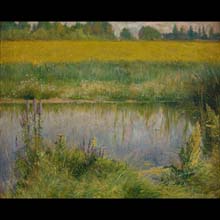
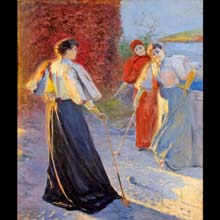
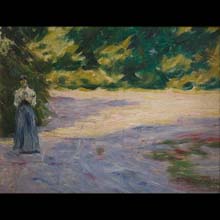
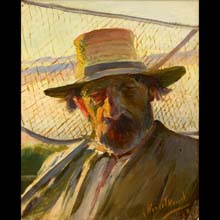
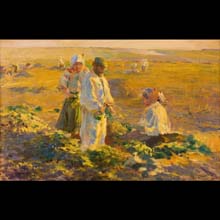
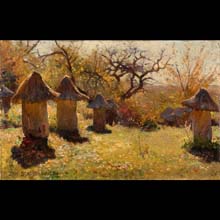
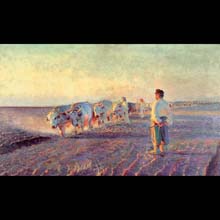
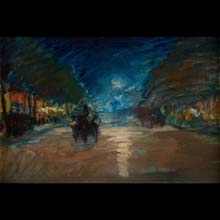
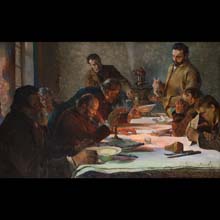

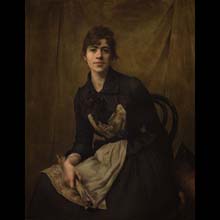
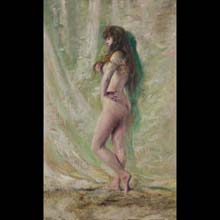
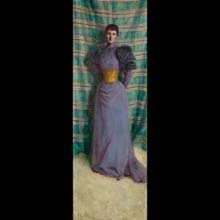
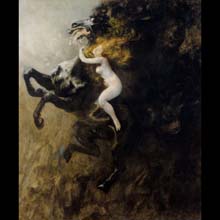
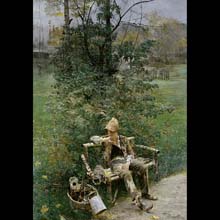
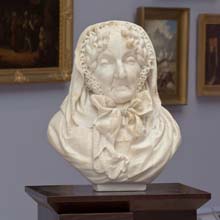
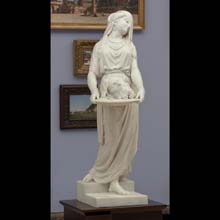
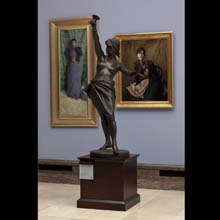
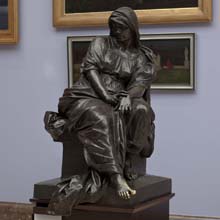
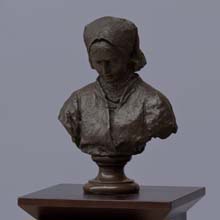

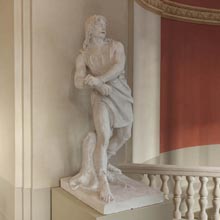

This room shows the variety of directions Polish painting took in the second half of the 19th century, especially with reference to art movements such as Realism and Naturalism, Impressionism and the beginnings of Symbolist painting. Particular emphasis is placed on landscape and genre painting, which was in its heyday at the time. On display are works of artists associated with different art circles, like the group of Marcin Olszyński, also known as Warsaw Bohemia, and “Polish Barbizons,” painters connected with French landscapists working mainly en plein air, in the forests of Fontainebleau. “Polish Munich painters” (artists who studied at the Academy in Munich) are well represented: starting from the early landscape painting by Józef Chełmoński Cranes, through landscape and genre compositions by Zygmunt Sidorowicz, Roman Kochanowski, Władysław Malecki, Józef Brandt, Julian Fałat and Maksymilian Gierymski, to genre paintings by Wacław Koniuszko, Samuel Hirszenberg and Stanisław Grocholski. Paintings by artists associated with the so-called Hotel Europejski group: Adam Chmielowski and Stanisław Witkiewicz, as well as Stanisław Masłowski, who was inspired by them, are shown together with Chełmoński’s Four-In-Hand.
Special attention is paid to artists setting new trends, seeking interesting solutions in terms of theme or form, e.g. Józef Szermentowski, Józef Chełmoński, Józef Brandt, Maksymilian Gierymski, Aleksander Gierymski, Władysław Podkowiński, Leon Wyczółkowski and Jacek Malczewski. Their works, e.g. Four-In-Hand by Chełmoński, Meeting on the Bridge by Józef Brandt, Cattle Going to a Watering Place by Józef Szermentowski, Evening on the Seine by Aleksander Gierymski and Introduction by Jacek Malczewski, mark the ideological and visual dominant features of this part of the exhibition.
Realists called for creating works of art worthy of the age. As a result, painting and sculpture of the day were dominated by contemporary themes. Landscape painting, usually combined with genre scenes (Józef Brandt, Aleksander Kotsis) and animal motifs (Józef Chełmoński, Julian Fałat, Władysław Malecki, Józef Szermentowski), grew in importance. Battle scene and oriental painting, represented mainly by Polish Munich painters (Juliusz Kossak, Józef Brandt), was still popular. Genre scenes depicting everyday life of landed gentry, townsfolk and peasantry enjoyed popularity (Aleksander Kotsis, Franciszek Kostrzewski, Józef Brandt, Józef Chełmoński, Stanisław Grocholski, Wacław Koniuszko). An interest in the people and their customs played an important role in the latter half of the century, evolving from the depictions in the spirit of social criticism, through picturesque genre painting or dispassionate observation close to naturalism (Aleksander Gierymski), to symbolic representations (Witold Pruszkowski). Portrait, which had lost its conventional character in favour of a more intimate representation deepened psychologically, enjoyed continuing popularity (paintings by Anna Bilińska-Bohdanowicz and Jacek Malczewski, sculptures by Leon Wyczółkowski, Teodor Rygier and Walery Gadomski).
The movement known as Polish Impressionism is presented on the examples of works by Władysław Podkowiński, Józef Pankiewicz, Jan Stanisławski and Leon Wyczółkowski. Like the so-called German Impressionism, Polish Impressionism constituted only a partial adaptation of the assumptions of the movement, being less extreme than the French version. In many cases, it consisted in the combination of Realism and Naturalism with some elements of Impressionist representation, in particular bright colours and divisionism as well as free, wide brush strokes and the use of pure colours.
Most painters of the time continued their education, received in the country, especially in Warsaw and Krakow, at universities abroad, in Saint Petersburg, Düsseldorf, Berlin, Munich and Paris. Despite the existence of numerous distinctive qualities of domestic painting of the time, works produced by Polish artist in the second half of the 19th century fell within the context of the European art of the day.
Polish art at the close of the century saw works combining Symbolism with the aesthetics of Expressionism. As an example of such solutions can serve Ecstasy by Władysław Podkowiński, severely damaged by the artist in rather mysterious circumstances. The oeuvre of Jacek Malczewski, full of symbolism, shows the character of Polish art towards the end of the century. A duty to serve the country and nation was combined with an attitude typical of the Young Poland artist, focused on expressing his own emotions and desires. Malczewski’s painting entitled Introduction is the ideological end of the exhibition, at the same time introducing the viewer into the scope of the Gallery of 20th-Century Polish Art, housed in the Main Building of the National Museum in Krakow.
Aleksandra Krypczyk
Special attention is paid to artists setting new trends, seeking interesting solutions in terms of theme or form, e.g. Józef Szermentowski, Józef Chełmoński, Józef Brandt, Maksymilian Gierymski, Aleksander Gierymski, Władysław Podkowiński, Leon Wyczółkowski and Jacek Malczewski. Their works, e.g. Four-In-Hand by Chełmoński, Meeting on the Bridge by Józef Brandt, Cattle Going to a Watering Place by Józef Szermentowski, Evening on the Seine by Aleksander Gierymski and Introduction by Jacek Malczewski, mark the ideological and visual dominant features of this part of the exhibition.
Realists called for creating works of art worthy of the age. As a result, painting and sculpture of the day were dominated by contemporary themes. Landscape painting, usually combined with genre scenes (Józef Brandt, Aleksander Kotsis) and animal motifs (Józef Chełmoński, Julian Fałat, Władysław Malecki, Józef Szermentowski), grew in importance. Battle scene and oriental painting, represented mainly by Polish Munich painters (Juliusz Kossak, Józef Brandt), was still popular. Genre scenes depicting everyday life of landed gentry, townsfolk and peasantry enjoyed popularity (Aleksander Kotsis, Franciszek Kostrzewski, Józef Brandt, Józef Chełmoński, Stanisław Grocholski, Wacław Koniuszko). An interest in the people and their customs played an important role in the latter half of the century, evolving from the depictions in the spirit of social criticism, through picturesque genre painting or dispassionate observation close to naturalism (Aleksander Gierymski), to symbolic representations (Witold Pruszkowski). Portrait, which had lost its conventional character in favour of a more intimate representation deepened psychologically, enjoyed continuing popularity (paintings by Anna Bilińska-Bohdanowicz and Jacek Malczewski, sculptures by Leon Wyczółkowski, Teodor Rygier and Walery Gadomski).
The movement known as Polish Impressionism is presented on the examples of works by Władysław Podkowiński, Józef Pankiewicz, Jan Stanisławski and Leon Wyczółkowski. Like the so-called German Impressionism, Polish Impressionism constituted only a partial adaptation of the assumptions of the movement, being less extreme than the French version. In many cases, it consisted in the combination of Realism and Naturalism with some elements of Impressionist representation, in particular bright colours and divisionism as well as free, wide brush strokes and the use of pure colours.
Most painters of the time continued their education, received in the country, especially in Warsaw and Krakow, at universities abroad, in Saint Petersburg, Düsseldorf, Berlin, Munich and Paris. Despite the existence of numerous distinctive qualities of domestic painting of the time, works produced by Polish artist in the second half of the 19th century fell within the context of the European art of the day.
Polish art at the close of the century saw works combining Symbolism with the aesthetics of Expressionism. As an example of such solutions can serve Ecstasy by Władysław Podkowiński, severely damaged by the artist in rather mysterious circumstances. The oeuvre of Jacek Malczewski, full of symbolism, shows the character of Polish art towards the end of the century. A duty to serve the country and nation was combined with an attitude typical of the Young Poland artist, focused on expressing his own emotions and desires. Malczewski’s painting entitled Introduction is the ideological end of the exhibition, at the same time introducing the viewer into the scope of the Gallery of 20th-Century Polish Art, housed in the Main Building of the National Museum in Krakow.
Aleksandra Krypczyk













